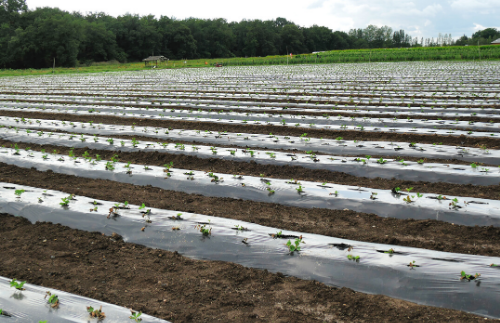Did you know that cotton contamination is 100 percent preventable? In the past, many cotton industry experts and farmers believed that some amount of contamination was inevitable; but today, with the advent of stronger preventative techniques, the National Cotton Council of America argues that contamination can be prevented altogether. The NCC is working tirelessly to get this message out to U.S. cotton farmers, providing them with the information and resources they need to protect cotton’s reputation as a clean fiber.
What Is Cotton Contamination?
Cotton can become contaminated during any stage of the production process, from picking and storing to ginning and manufacturing. It becomes contaminated when foreign fibers mix with the cotton. Foreign fibers that may show up if farmers and manufacturers do not take proper preventative measures include:
- Plastic shopping bags
- Mulch and twine
- Module and bale wraps
- Seed-coat fragments
- Leaves
- Immature and empty balls
- Stems
- Flowers
- Sticks and weeds
- Lint
Cotton contamination can be disastrous for farmers. A single foreign fiber may lead to the rejection of an entire batch of cotton, causing permanent harm to the relationship between growers, ginners, merchants, and mills. Cotton farmers lose not only large sums of money, but also valuable working relationships.
What Is the Industry Doing About It?
The movement for contamination-free cotton is crucial, now more than ever. With fierce global competition from overseas cotton farmers, as well as man-made fibers, a single foreign fiber can permanently damage a farmer’s reputation. That’s why the NCC has instituted a “zero tolerance” policy when it comes to seed cotton and lint contamination.
While strict, the NCC’s policy is far from unachievable. The organization has compiled a resource page for industry members striving to keep their cotton clean. In collaboration with other key players in the cotton industry, they created this comprehensive video guide on preventing plastic contamination.
The NCC has developed seven best practices for keeping cotton 100 percent contamination-free:
- Before harvesting, create a “watch list” for foreign materials that may contaminate the crop, like plastics, roadside debris, grease or oily residues, leaves, sand, and dust.
- Inspect fields carefully, removing all materials that a harvester could pick up.
- Clean and power wash all harvesting equipment.
- During harvest, refer often to your watch list, and have the entire crew on high alert for potential contaminants.
- Complete daily inspections of harvest equipment, watching for hydraulic leaks or grease that could contaminate seed cotton.
- Do not build modules or bales in such a way that potential contaminants might be picked up when they are moved.
- Refrain from identifying modules and/or bales with a permanent marker.
Purification Processes Are Key
While following NCC guidelines on preventing cotton contamination is a vital first step, it’s equally important that cotton manufacturers purify their product to ensure its safety. At Barnhardt, we’ve spent a century perfecting our totally chlorine-free (TCF) purification process. When you buy a product made from Barnhardt cotton, you know you’re getting the safest, purest cotton there is.
